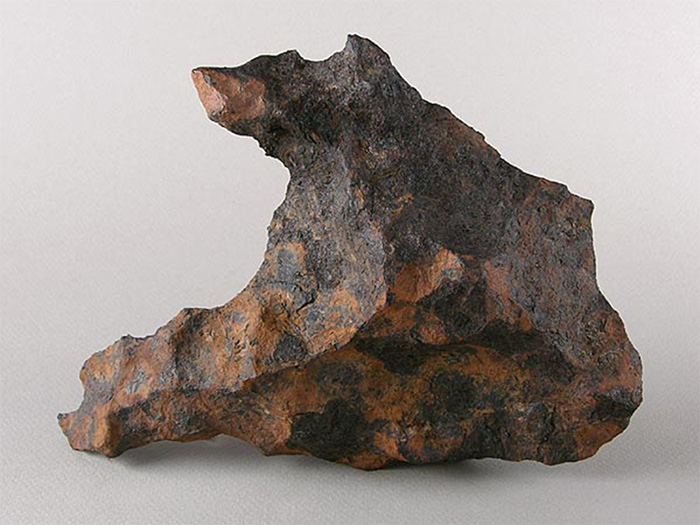
Humans have wondered about the age of Earth for centuries.
In the 1600s, a bishop worked backwards through generations of “begats” in the Bible to come to a very specific date for Creation: October 26, 4004 BC. At 6 PM.
In the 1700s, scientists developed their own theories. Recognizing that different layers of rock represent different periods in Earth history, they calculated a much looser estimate: 1 million to 1.6 billion years old.
By the early 1900s, scientists began to understand radioactivity, and found that each radioactive element has a half-life—a specific amount of time it takes to lose half its energy.
They could use these half-lives to more precisely date Earth’s rock layers, pushing the age of the oldest ones to 3 billion years.
With improved dating techniques, we now find rocks between 3.5 and 4 billion years old on every continent.
But there are limits to this method. The surface of Earth is always eroding and renewing itself, and old Earth rocks tend to get recycled. To reach back further in time, we needed a place of the same age, but undisturbed by plate tectonics, like the moon.
The oldest rocks we’ve found there date to around 4 and a half billion years. By studying these, and meteorites that landed on Earth from within our solar system, we’ve arrived at an age for Earth of 4.55 billion years.
Background
Synopsis: Using radiometric dating, scientists can determine the ages of the oldest rocks and minerals on Earth and the moon, and in asteroids. But how can we figure out the age of Earth itself?
- Humans have been curious about the age of Earth for centuries.
- Romans believed that Earth was as old as recorded human history, going as far back as the Trojan War, to about 1250 BC.
- In the seventeenth century, the Archbishop of Ireland, James Ussher, calculated the age of Earth by counting all the “begats” in the Bible, making assumptions about life cycles, and arriving at the date of October 26, 4004 BC…at precisely 6 PM!
- Anatomist Nicholas Steno recognized that fossils were the remains of living organisms and developed principles of geology that are still employed today.
- In the eighteenth century, William Smith created the first geologic map and recognized that each layer represented a specific time in Earth history.
- In 1788, geologist James Hutton explained that Earth is dynamic, and that geologic forces shaped Earth in the past and will continue to shape it in the future.
- Eighteenth- and nineteenth-century scientists calculated that it would have taken rivers 90 to 100 million years to deliver enough dissolved minerals to the oceans to explain their saltiness, and 1 million to 1.6 billion years to deposit the thickness of sediments observed in the rock record.
- Lord Kelvin calculated that it would have taken a molten Earth 100 million years to cool but did not consider heat from sources that were unknown in his day, like radioactive decay.
- In 1896, the phenomenon of radioactivity was discovered by Marie Curie. By 1904, Ernest Rutherford and his colleagues figured out how to date old rocks using radioactive-decay products.
- The number of protons in an atom’s nucleus defines what element it is; each element comes in a variety of isotopes with different numbers of neutrons.
- Some isotopic nuclei are unstable and lose energy by emitting radiation as particles or electromagnetic waves when they decay into other elements, known as daughter products.
- Decay can be expressed in “half-lives,” meaning the amount of time needed for half of the radioactive atoms (parent) to convert to different elements (daughter), without regard to pressure and temperature.
- When rocks are heated deep in the earth, their daughter products are lost through diffusion and their radioactive clocks reset.
- Scientists measure various isotopes in a rock and calculate ratios that indicate how long the radioactive material has been decaying since the rock formed. This gives them an age for the rock.
- Half-lives of some isotopes can be as long as 700–100 billion years.
- In 1913, geologist Arthur Holmes calculated that the oldest rock he was able to find was 1.6 billion years old. Critics attacked him, but he was on the right track!
- In the 1920s, using older rocks, he revised his estimate upward to 3 billion years, further igniting debate since it exceeded physicists’ estimate of the age of the universe, which was calculated at just 1.8 billion years at the time.
- We now know that there are rocks older than 3.5 billion years old on every continent, confirmed by multiple radioactive-isotope dating techniques.
- These ancient rocks started as lava flows deposited in shallow waters, so we know Earth must have existed before then.
- The oldest rocks on Earth were found near Canada’s Hudson Bay—the Acasta Gneiss has been dated at 4.28 billion years.
- Single zircon crystals found in sedimentary rocks in Australia are at least 4.36 billion years old, but the source rocks for these grains have never been found.
- Scientists soon realized that they could never use rocks from Earth to date Earth itself because the surface of our planet is so dynamic: erosion, deposition, mountain building, and subduction constantly renew it. Old Earth rocks tend to get recycled. So where else could we look?
- Earth formed at the same time as the solar system.
- The moon has never been disturbed by plate tectonics. Six Apollo and three Luna missions brought a few rocks back from the moon, the oldest dated between 4.4 and 4.5 billion years old.
- Large, iron Canyon Diablo meteorites provide a very reliable age of 4.54 billion years (+/- 1%).
- More than 70 other meteorites provide an age range for the solar system of 4.53–4.58 billion years.
- The universe is now thought to be about 13.7 billion years old, based on the recession of distant galaxies.

